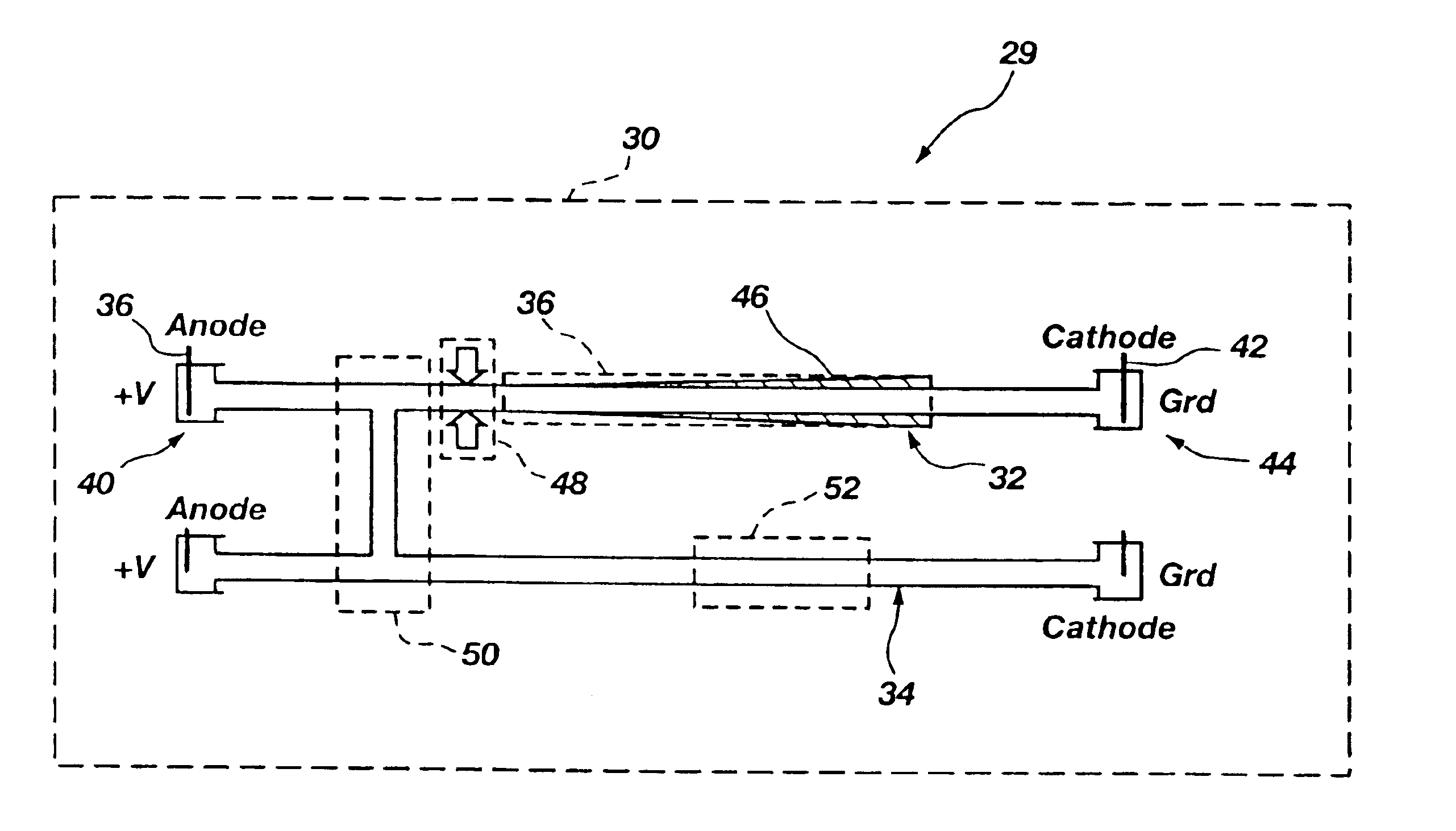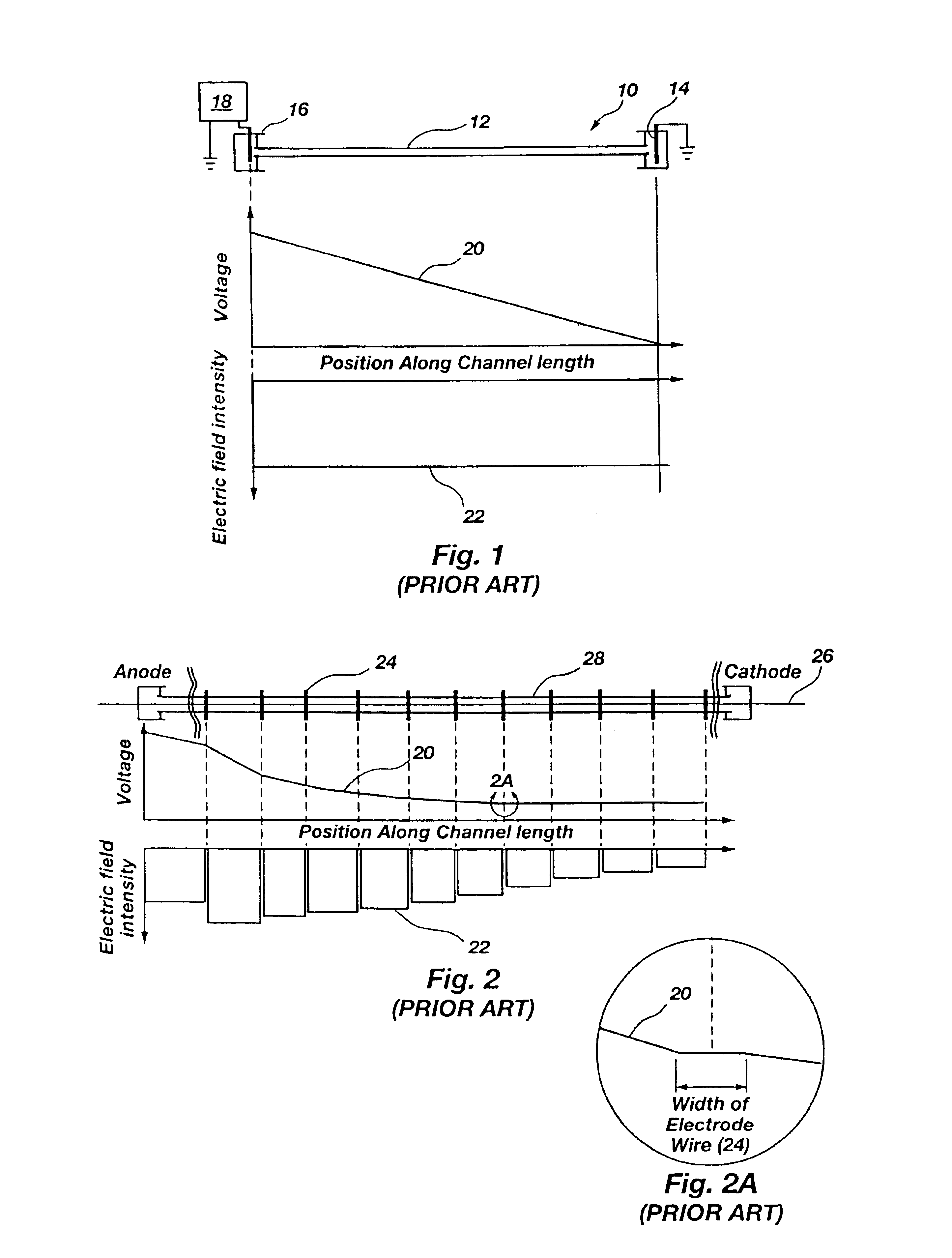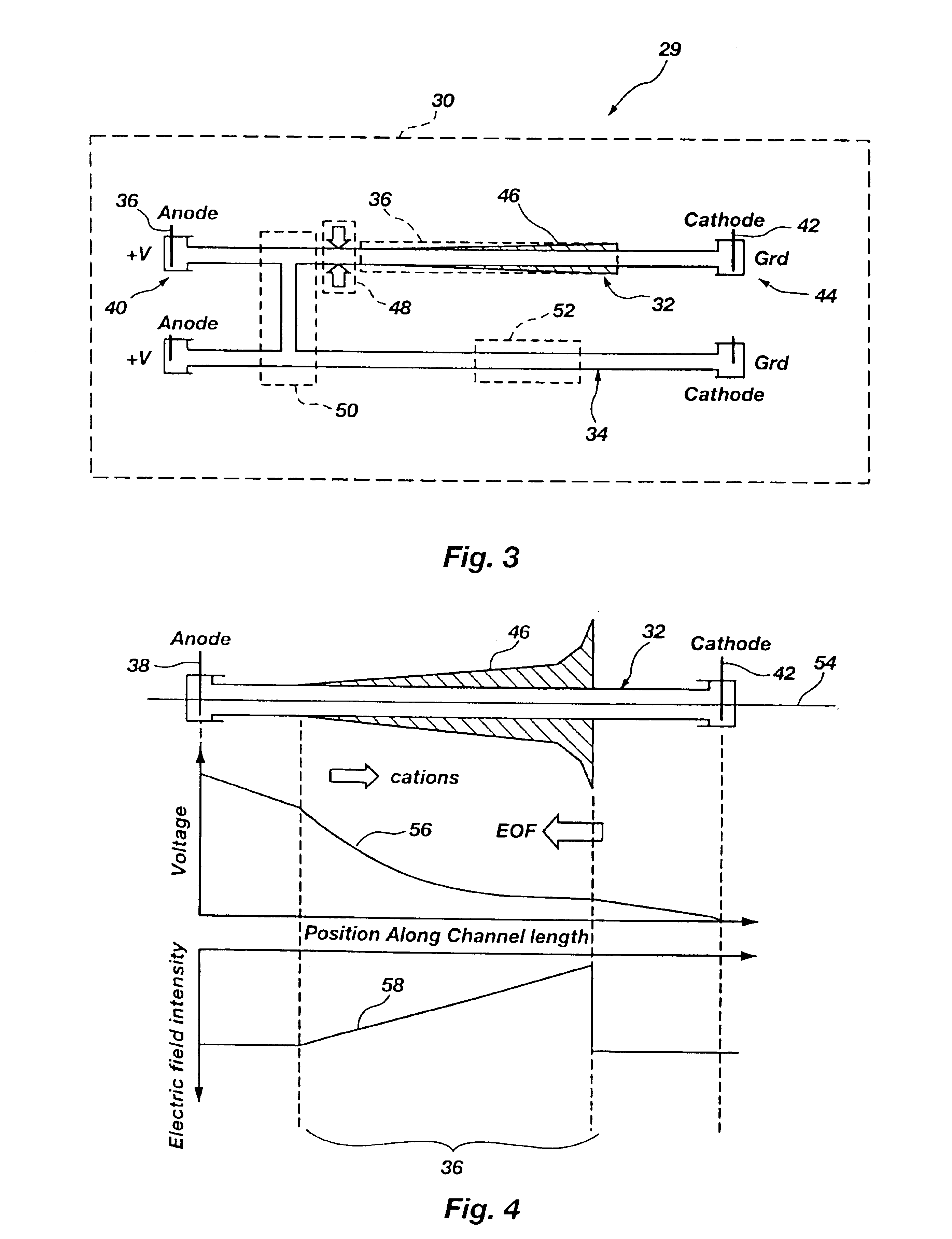Electromobility focusing controlled channel electrophoresis system
a controlled channel and electrophoresis technology, applied in the direction of fluid pressure measurement, fluid/fluent solid measurement, peptide measurement, etc., can solve the problems of inability to separate individual analyte species, less well recognized and understood as a tool for enhancing separation
- Summary
- Abstract
- Description
- Claims
- Application Information
AI Technical Summary
Problems solved by technology
Method used
Image
Examples
Embodiment Construction
)
With reference to FIG. 3 of the drawings, which are given by way of example, and not by way of limitation, an electromobility focusing system is embodied in a controlled channel electrophoresis system 29, which comprises in one embodiment a monolith 30 with a first, or primary, separation channel 32 and a second (secondary) channel 34 that are interconnected. It will be appreciated from the discussion below that the system can comprise in one, embodiment only a primary channel, and, moreover, that other variations are possible. A system incorporating several elements and a description of their relationship and function as an example of possible embodiment(s) of the invention will illustrate operative principles. A broad overview will be given, and then individual portions of the system and further details of structure and operation will be described in more detail. The primary channel performs analyte species separation using a continuous electric field intensity gradient (CEFIG) a...
PUM
| Property | Measurement | Unit |
|---|---|---|
| DC isolation voltage | aaaaa | aaaaa |
| dielectric constant | aaaaa | aaaaa |
| diameter | aaaaa | aaaaa |
Abstract
Description
Claims
Application Information
 Login to View More
Login to View More - R&D
- Intellectual Property
- Life Sciences
- Materials
- Tech Scout
- Unparalleled Data Quality
- Higher Quality Content
- 60% Fewer Hallucinations
Browse by: Latest US Patents, China's latest patents, Technical Efficacy Thesaurus, Application Domain, Technology Topic, Popular Technical Reports.
© 2025 PatSnap. All rights reserved.Legal|Privacy policy|Modern Slavery Act Transparency Statement|Sitemap|About US| Contact US: help@patsnap.com



